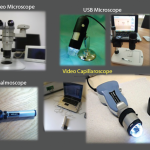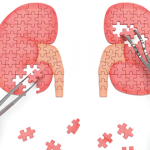Dr. Fogo also shared insight into AAV glomerulonephritis. “This [condition] is a pauci-immune necrotizing crescentic glomerulonephritis. The crescents are often focal with varying chronicity amongst affected glomeruli. We don’t see endocapillary hypercellularity, immunofluorescence staining or electron microscopy deposits like we do in lupus nephritis class III and IV. Of note, subacute bacterial endocarditis-associated glomerulonephritis can have the same histologic appearance of AAV and cause ANCA positivity, so remember to consider this, too.”
To conclude, she shared one last pearl: “Crescents are bad, but sclerotic crescents won’t improve with immunosuppression [because] they’re just scars. Cellular crescents, on the other hand, can respond to treatment.”
Summary
Renal biopsy is an invaluable tool for the accurate diagnosis and management of patients with kidney involvement due to rheumatic disease. Although pathology reports may seem intimidating, a basic understanding of renal patterns of injury can go a long way. If you still have questions, pick up the phone and call your friendly local pathologist to discuss the case. When pathologic findings are combined with clinical context, patients get the best care.
Samantha C. Shapiro, MD, is an academic rheumatologist and an affiliate faculty member of the Dell Medical School at the University of Texas at Austin. She received her training in internal medicine and rheumatology at Johns Hopkins University, Baltimore. She is also a member of the ACR Insurance Subcommittee.
References
- Bajema IM, Wilhelmus S, Alpers CE, et al. Revision of the International Society of Nephrology/Renal Pathology Society classification for lupus nephritis: Clarification of definitions, and modified National Institutes of Health activity and chronicity indices. Kidney Int. 2018 Apr;93(4):789–796.
- Seshan Sv, Jennette JC. Renal disease in systemic lupus erythematosus with emphasis on classification of lupus glomerulonephritis advances and implications. Arch Pathol Lab Med. 2009 Feb;133(2):233–248.
- Salama AD, Dougan T, Levy JB, et al. Goodpasture’s disease in the absence of circulating anti-glomerular basement membrane antibodies as detected by standard techniques. Am J Kidney Dis. 2002 Jun;39(6):1162–1167.


